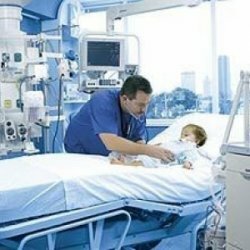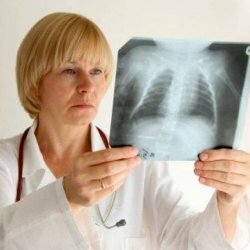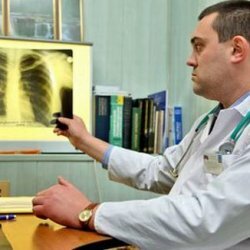Artificial ventilation
 Ventilation devices are created on the principle of monitoring the quality of breathing, ie the correct ratio of pressure and the ideal volume in this situation, sometimes simultaneously. Between them lies a direct parallel, and from this it follows that the given volume is correlated with its parameters of the pressure required at this stage or vice versa. The characteristics of the apparatus have a significant difference in regimes, but nevertheless, including a common feature containing the frequency, the required volume, the flow rate, the waveform and the criterion of the inhaled and exhaled air.
Ventilation devices are created on the principle of monitoring the quality of breathing, ie the correct ratio of pressure and the ideal volume in this situation, sometimes simultaneously. Between them lies a direct parallel, and from this it follows that the given volume is correlated with its parameters of the pressure required at this stage or vice versa. The characteristics of the apparatus have a significant difference in regimes, but nevertheless, including a common feature containing the frequency, the required volume, the flow rate, the waveform and the criterion of the inhaled and exhaled air.
Ventilation of the volume-controlled ventilation mode( ie volume-specific)
With a constant volume of recommended delivery, the unit still has a different pressure. Applicable with additional( auxiliary AC) and alternating forced( forced, SIMV) oxygen supply.
A-C. We can say about its simplicity and reliability. His work is as follows. Each attempt to breathe on its own, fixes the sensor, mechanically supplying at that moment the required volume of oxygen. If the patient does not have a respiratory reflex, he additionally sets the desired respiratory rate.
SIMV . Similar to working with AC.The difference is in the disconnected sensor, and there is no function of independent inspiration. It is possible to inhale by yourself only when the valve is open.
At frequency of application of a method its minuses in impossibility of independent respiration, obvious inefficiency at excommunication of the patient.
PCV( with constant pressure supply)
Consists of 3 categories: PCV control, PSV support and some NIPPV( non-invasive, respiratory) methods of resuscitation. The method of their work: supplying pressure of inspired oxygen, is limited constant to exclude traumatism, while the frequency can fluctuate. In theory, it can be useful for RD-SV, but this has not been proved.
PCV analogue A-C.Breathing, which increases the established limits of the sensor, is translated to full support. There is no minimum breath limit. Their frequency depends on the patient himself. Fully automated supply of pressure. The attempt to breathe is directly proportional to the volume. Use when exiting. A similar indicator in this category is demonstrated by SARA, with a slight difference in the constant( unchanged at all stage) support for the pressure currently needed.
Non-invasive NIPPV resuscitation .Pressure of constant positive amplitude. Oxygen is delivered to the patient through a mask close to the face( nose, or similar - nose-mouth) with unstable breathing. The required breath-inhalation ratio works at a positive pressure only. The lack of protection of the respiratory tract makes it possible to use this method only if the patient has reflexes of defense, which are completely in the mind to exclude asphyxiation. With a tendency to bleeding or gastric congestion, it is desirable to use this type with increased caution. The installation is allowed to be significantly lower than the pressure of the local opening of the esophagus itself, in order to avoid access to the supplied oxygen.
Fan .The parameters depend on the circumstances. Changes from the calculation per minute give the required definition of respiration and the volume needed( from 8 to 9 ml / kg).Exception - patients with hereditary-degenerative diseases( neuromuscular).The volume increases due to possible atelectasis of the lungs, it decreases with diseases of the ARDS.The sensor is installed to fix the attempt to inhale( ideally - 2 cm of water).Increasing or decreasing the sensitivity of the sensor is fraught with inaccuracies, at a high scale, one can not notice an attempt at breathing, at extremely low - hyperventilation is possible.
For normal breathing, within normal limits, the exhalation and inspiration parameters are related as 1: 3.Exception is asthma and some other respiratory diseases( here it will be 1: 4.)
The flow rate is 60 l / min, if the normal breathing rhythm is disturbed, it can be raised to 120 l / min.
PEEP. Use it to increase and subsequent obstruction in the lungs when closing at the very end of the exhalation. The recommended level installation is 5 cm of water. Art. To avoid tightening of the lungs( atelectasis), due to manipulations( tracheal intubation) or immobility of the patient in the spinal presentation. With an increase in the scale, there is a positive dynamics of saturation of blood cells with oxygen( oxygenation) in hypercapnic lung ventilation undergoing treatment( cardiogenic edema).Significant saturation in the alveoli and connective tissues allows the alveoli to fully open. This type of manipulation is aimed at reducing the reading of FiO( > 0.6) and makes it possible to reduce the risk of damage to the oxygen mixture. There are also negative aspects, in connection with this procedure there is an increase in intrathoracic pressure, venous return is violated, which is fraught with hypovolemia.
Possible complications after using
With the tracheal intubation, there may be a risk of inflammation in the nasal cavity( sinusitis), fan-associated pneumonia, frequent formation of tracheal-vascular fistulas or on the esophagus, often with damage to the vocal cords.
Ventilator is fraught with spontaneous pulmonary ruptures( pneumothorax), VAPL is not excluded( mechanical damages of different degree of location, including a ventilator-associated injuries associated with this type of ventilation, sometimes pronounced hypotension.) It is believed that this is a consequence of external effects on organsBreathing by damaging the airways and pulmonary sprains caused by a circular cycle involving the ability to open or close the free space for access of oxygen bound toParenchyma. Perhaps the combined effect of these all causes.
Diagnosing a patient for acute hypotension by a selective method, it is necessary to exclude a patient with pneumothorax with a tight location. Most often, the focal location of hypotension develops as a consequence of poor return of venous blood, with increasing pressure in the chest, when using overestimated values in PEEP.More often diagnosed in patients with hypovolemia.
Often, the occurrence is directly related to the use of sedative drugs in complex intensive care.
With the exception of pneumothorax, including the fan of optional hypotensive reasons, it is possible to disconnect the patient for further resuscitation by manual method( Bag with a frequency of 2-3 breaths per minute pure 100% oxygen for further correction).To achieve a good method in a relatively short period of time, further treatment should be fully corrected.
We also do not forget about the medical prophylaxis of thrombosis to eliminate internal bleeding( heparin 5000.0 * 2p./m 7 days) The use of compression therapy( elastic bandages and special stockings) is used for the risk of venous thrombosis, the medication therapy in this case includesSelf famotidine 20 intravenously 2 days and sucralfate inside 3 days.
PPI drugs are used only with active bleeding or with their prior appointment.
Still, the best way to reduce complications is to minimize exposure to mechanical ventilation.



